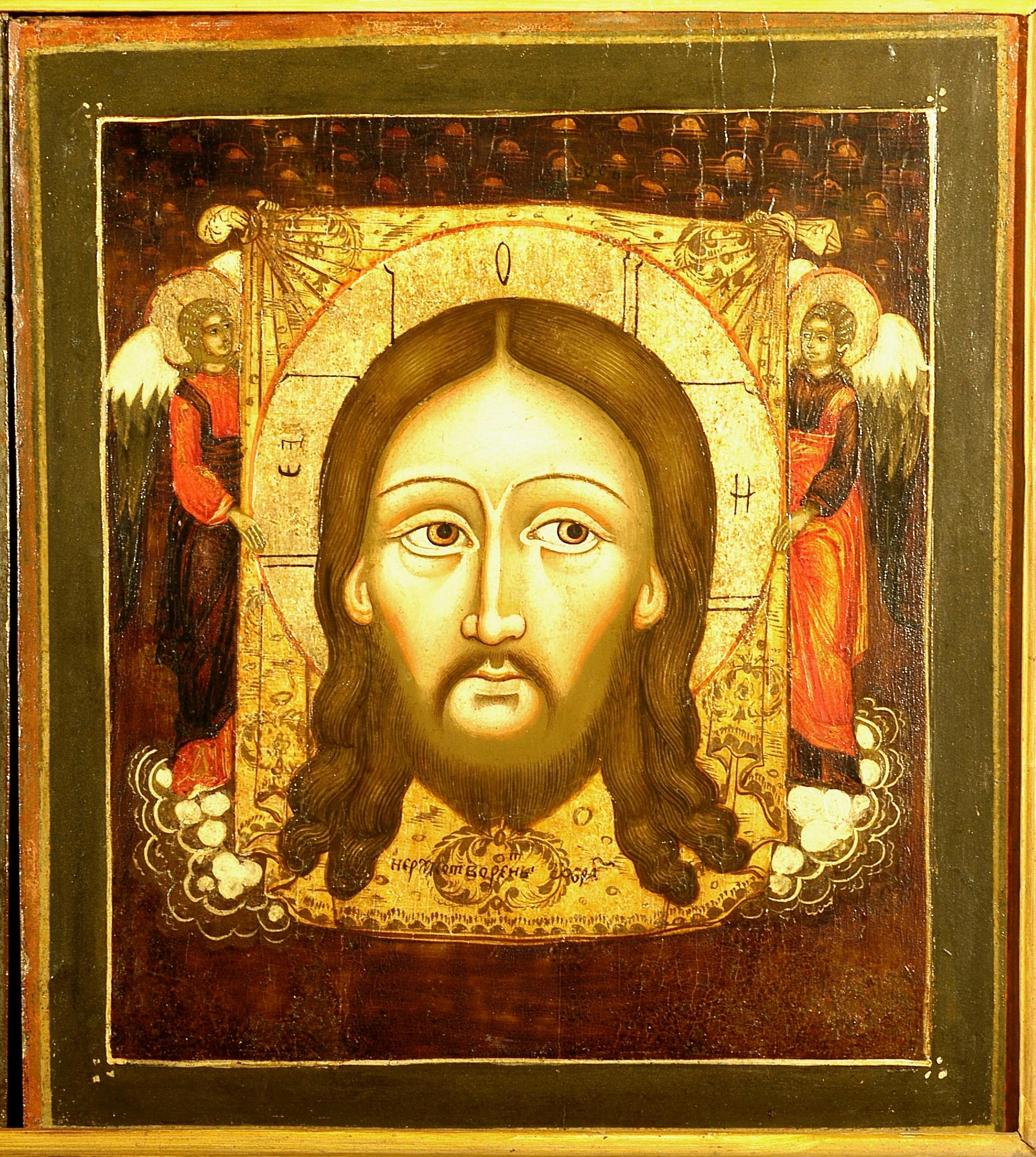Christ the Saviour Acheiropoieta
Central Russia
Two angels on white clouds are holding up a cloth bearing the effigy of Christ’s face; the soft texture of the fabric is suggested by the wavy form of the bottom edge of the drape and by the folds that fan out towards the top corners. The Saviour’s aura contains the divine monogram ΩОН (He who is), while the inscription НЕРУКОТВОРЕННЫ ОБРАЗ (Acheiropoieta , that is, ”icon not painted by human hand”) runs along the bottom.
The presence of the angels is a variant of the depiction of the mandylion, the relic of the effigy of Christ’s face originally kept in Edessa, highly venerated by Christianity. The introduction of the angels venerating the holy effigy, found from the 15th century onwards in icons produced in the Ukraine and in the westernmost regions of Russia, may reflect the influence of the western iconography of the Veil of Veronica, the cloth with which a holy woman washed Christ’s face during the Calvary. In light of this, the icon takes on a more solemn feel, the ostentation of Christ as king who has claimed victory over death.
This iconographic model was very popular following the transfer of a miraculous icon bearing the same subject from Khlynov (now Kirov) to the Cathedral of Christ the Saviour in Moscow in 1647.
In terms of style, the painting is similar to many of the other icons in the Uffizi collection, created in provincial workshops in Central Russia around 1730. Christ’s face, characterised by a particular softness of the features and a vivid expression, is inspired by the models of Simon Usakov (1626-1686).
